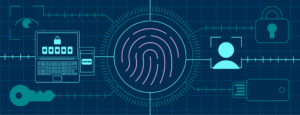
Top Reasons to Choose UX/UI Design as a Career Option - Geeta University
Our world is changing, and technology is becoming more and more important to us every day. On our many devices, we do a lot of things online, like buy things and pay bills.
As more people use online channels, it’s important to understand why UX is so important. How these products and platforms work and look has a big effect on how we think and feel about our digital experiences, so designers are in high demand. Companies have realised how important graphic designers, UX/UI designers, and motion designers are to the user experience of a product.
You’ll learn beyond design skills:
What does UX design mean? UX design is a group of methods and tools that help designers solve problems in the real world and make products that are both useful and fun to use. Even though the design process for each project is different, they all have the same basic steps:
– Research: finding a problem to solve and figuring out what users and the business need.
Ideation is the process of coming up with a possible solution to a problem.
– Prototyping is the process of making a working model or a full solution.
Testing: putting a prototype or a full solution to the test with real users.
As you go through this process, you’ll learn a number of other skills. Some of these skills are:
Empathy:
User experience design is the art and science of making things better for users. Designers must first figure out what problem they are trying to solve and who they are trying to solve it for. When you know the people you’re making things for, you can make designs that are much more effective.
Communication:
Most designers work in groups, so you’ll probably work with developers, marketers, and other designers, among others. You’ll need to learn how to work together, share ideas, and talk to each other well.
UI design:
UX design and UI design go hand in hand. Because of this, it’s a good idea to spend some time learning about UI design. Start with the basics of UI design, like colours and fonts, before moving on to more advanced topics like UI pattern design.
You may improve your clients' quality of life by doing the following:
Design is for the people who use something, not for engineers or other people who have a stake in it. So, the most important thing about user experience design is that it focuses on the user.
Just ten years ago, taxi services, for example, did not offer a great user experience. Before Uber, you had to call a taxi company to get a ride, and sometimes there weren’t enough cars. Uber changed the business. Setting up an Uber ride takes less than a minute. All of this happened because Uber looked at the problem from the point of view of the customer and made a great app and user experience to solve it.
With this user-centric approach, the people are at the centre of the design process. User research and usability testing are important parts of UI/UX design, and they can help you figure out what your project goals are. If you do this, you will have a big effect on how people go about their daily lives.
You will drive business growth:
There is also a link between how users feel about a product and how well it sells. When people use your product and like it, they are more likely to keep using it and tell their friends about it.
All platforms, apps, and websites need to have the right user experience design. Think about eCommerce sites: you want to make it as easy as possible for people to find what they want and buy it. UX design comes into play here.
You will learn new technologies:
UX design is a field that is growing quickly and has been named by businesses as one of the top ten most in-demand hard skills. Experience design is an interesting field where new ideas and technologies come up almost every day.
We expect the demand for designers who focus on the user experience of augmented reality and voice-based interfaces to grow over the next few years. Our physical world and the digital world will come together to make new places for people to live, and now is the best time to get involved
Where to start your UX/UI journey?
You’ll need a strong UX portfolio to get a job in the UX field. If you want to move into UX design and have experience with UI design, you’ll probably have some great work to put in your portfolio. Pick two or three projects you’re proud of and put them front and centre in your portfolio. Remember to look at each project from the user’s point of view and focus on how your design will benefit both your users and your business.
All of Geeta University’s students are encouraged to attend workshops and seminars hosted by the business community. Leading business leaders with demonstrated expertise in UX/UI design are leading these unique workshops. Additionally, Geeta University’s staff offers students who are interested in UX/UI design a lot of support and opportunities to master the fundamentals and succeed in this industry.
Conclusion:
Learning UX design is a complicated topic with much distinct expertise, it may take some time (such as UX writing, user interface design, and information architecture) (such as UX writing, user interface design, and information architecture). But the time you spend training will be well worth it when you see how customers use your products. Nothing beats the feeling of success you get when you solve real problems for real people. And seeing how people use your product and how happy it makes them will make you want to keep going on your UX design journey.
Related Posts
Boosting Productivity at the Workplace Using Soft Skills
Introduction In today’s fast-paced and ever-changing business environment, boosting productivity is a top priority for organizations aiming to stay competitive. While technical skills are crucial

Can I become a software engineer after B.Sc. Computer Science? – Geeta University
Can I become a software engineer after B.Sc. Computer Science? – Geeta University B.Sc. Computer Science is an undergraduate degree program that provides students with

Cryptography
Which Computer Science Engineering Specialization is in Great Demand? – Geeta University In an era dominated by digital transactions, communication, and information exchange, the need


